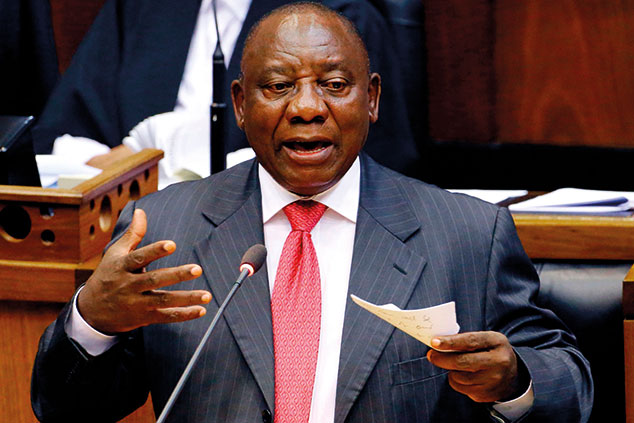
South Africa “has a miraculous knack for escaping from tight spots before the worst happens”, says Rian Malan in The Spectator. It achieved a peaceful end to apartheid in 1994. And now it appears to be turning the page on almost a decade of corruption and ineptitude under former president Jacob Zuma that came close to destroying democracy and sinking the economy.
Zuma finally resigned a fortnight ago and was replaced by the pragmatic and business-friendly former trade unionist Cyril Ramaphosa. The first few days of Ramaphosa’s tenure have been very encouraging, with the government presenting a budget that “steered a deft course between restoring fiscal discipline and maintaining vital social spending”, as Craig Mellow notes in Barron’s. It raised VAT for the first time in 25 years and imposed cuts on “a bloated bureaucracy”.
Along with a fair wind from the global economy, this implies the public-debt-to-GDP ratio will remain below 60%, a level it was expected to breach by 2022. That in turn should mean a downgrade of local-currency debt by Moody’s, the last of the three major credit-ratings agencies to deem it investment-grade, should be avoided.
The symbolic breach with the spendthrift Zuma years was clear from the budget, but Ramaphosa needs “honest, competent people” to get South Africa back on track, says The Economist. He made a big step in the right direction with a cabinet reshuffle this week in which he purged several Zuma allies and reinstalled two figures investors have always respected.
The return of competence
Nhlanhla Nene has returned as finance minister, having been fired by Zuma in 2015 for resisting lavish spending on the former president’s pet projects. Another respected and hawkish former finance minister, Pravin Gordhan, who was also fired by Zuma last year, will now be supervising state-owned companies, which became the epicentre of corruption and cronyism during Zuma’s tenure. There will be a second cabinet reshuffle later this year, notes Joseph Cotterill in the Financial Times, which should bring further changes. The number and size of ministries is being reviewed; they expanded to accommodate Zuma’s pliable cronies. That said, there is still a great deal to do, notably fixing the education system and making it easier to hire and fire workers to make a dent in an unemployment rate of almost 30%.
South African stocks are not a close reflection of the overall economy, as the local index is skewed towards commodities and the media sector. But for those contemplating a punt on the recovery, the long rand bear market should be over while the bond market rally, says George Hay on Breakingviews, “has further to go”.